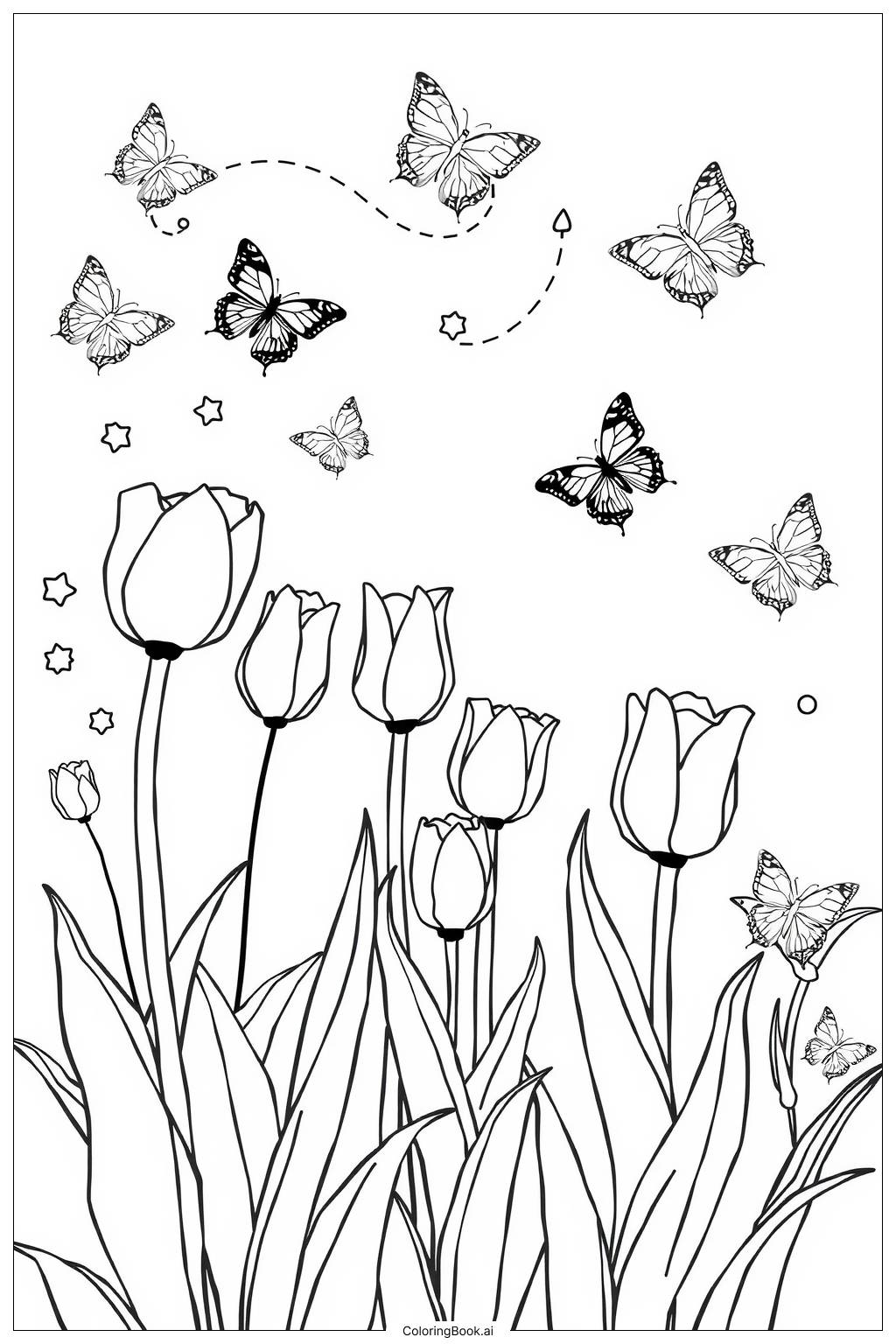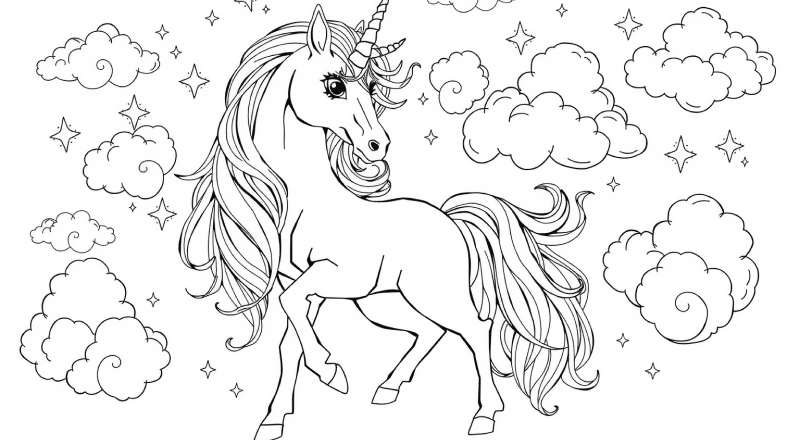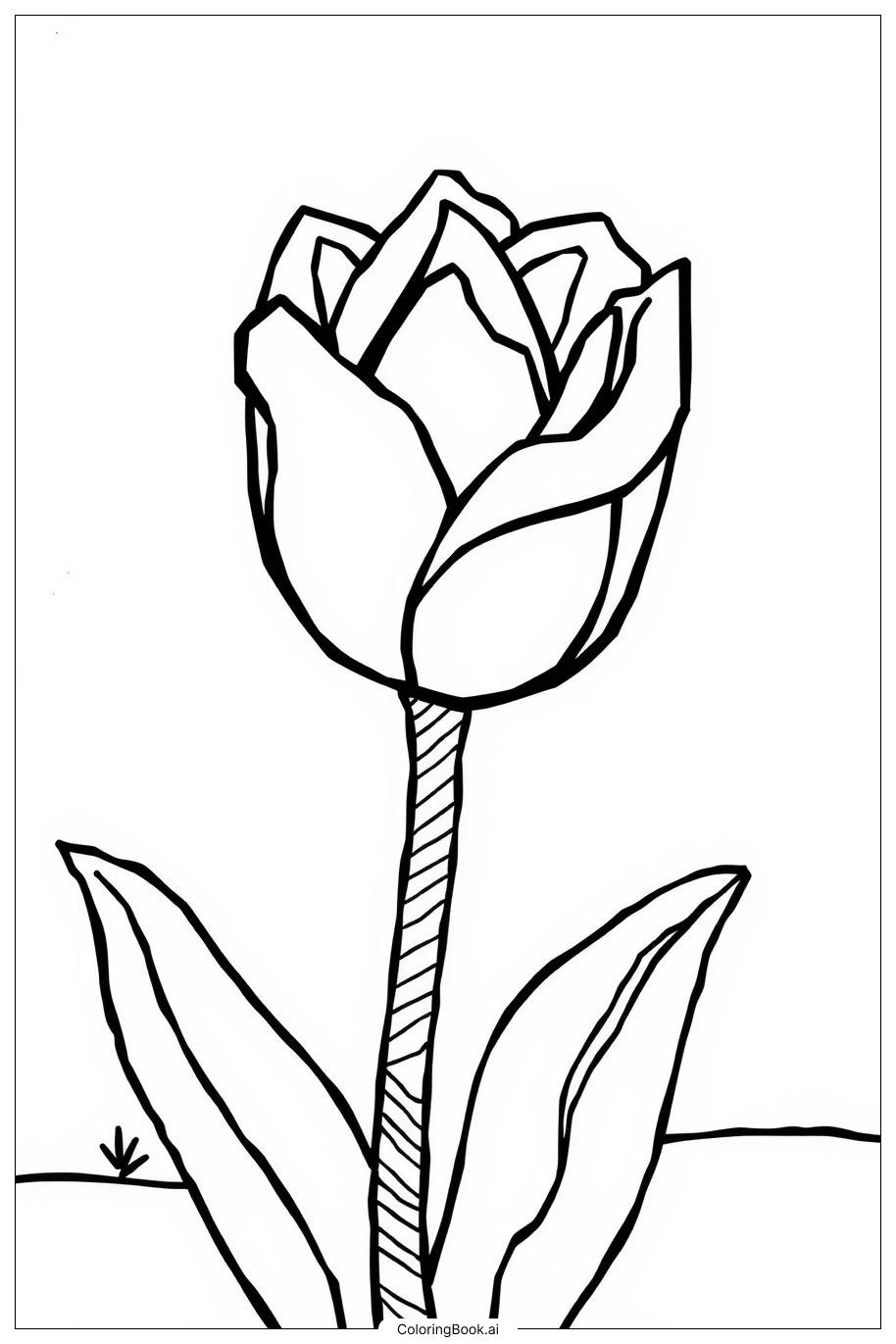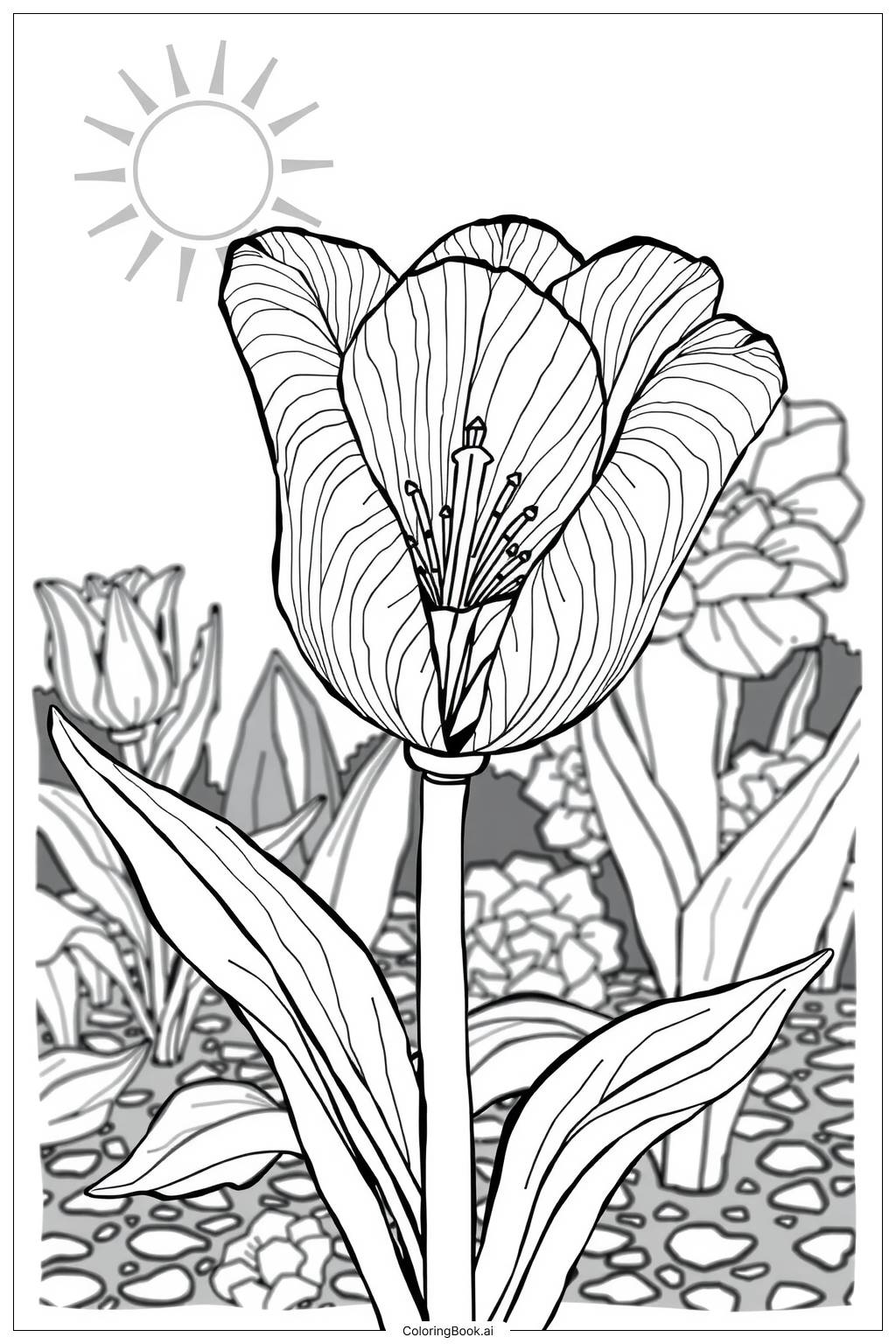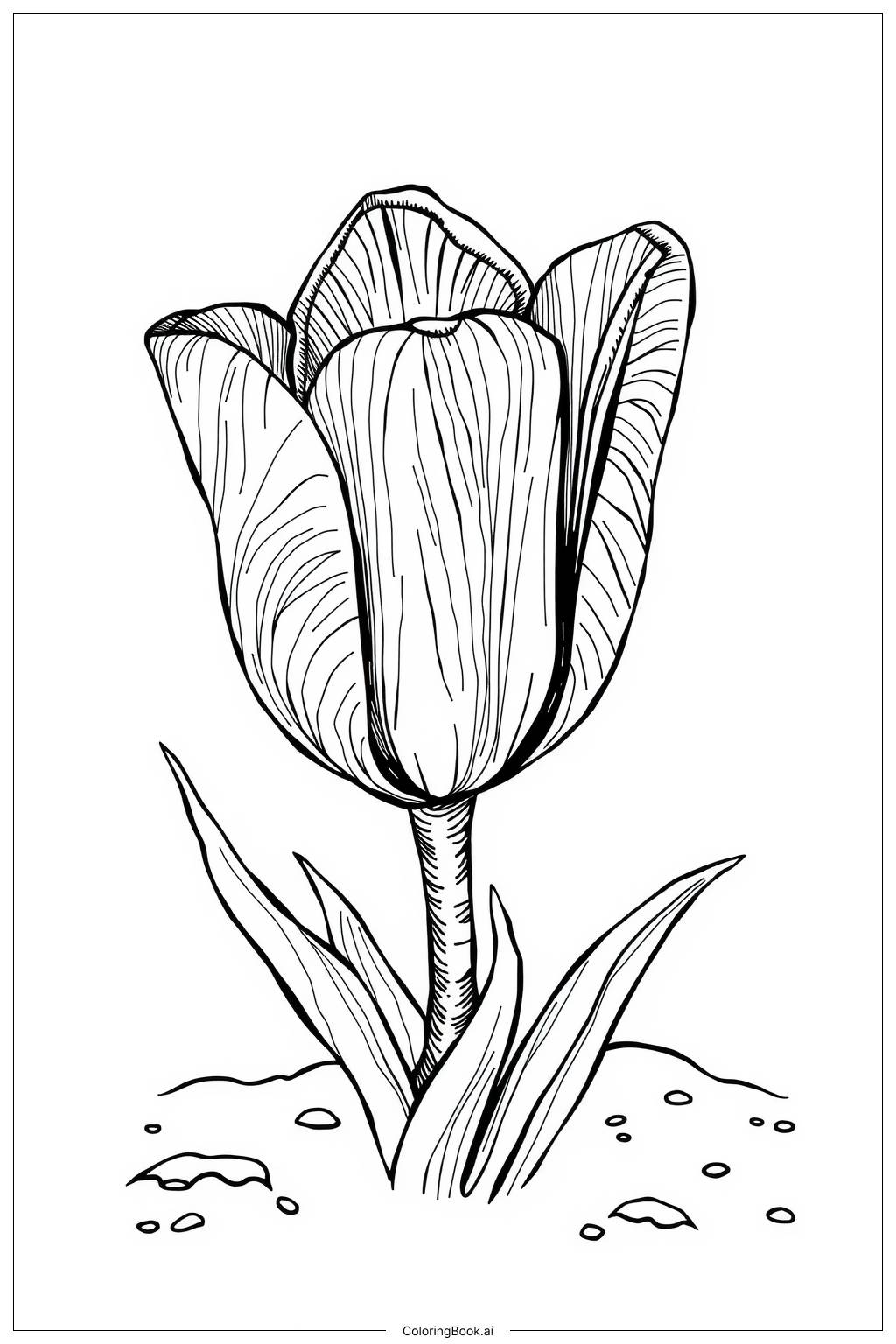Coloring tips: How to color Realistic Tulip Garden with Butterflies coloring page well?
When coloring the tulips, think about using bright colors like red, yellow, and pink for the flowers. Try blending different shades to create depth. The leaves can be colored in various shades of green, from light to dark. For the butterflies, use a mix of colors to make them stand out, like blue, orange, and purple. Remember to color the background lightly, perhaps a sky blue for a sunny day or a soft lavender for a twilight feel. This will help highlight the main features of the drawing.
Coloring challenges: Which parts are difficult to color and need attention for Realistic Tulip Garden with Butterflies coloring page?
1. Choosing Colors: With so many vibrant colors to choose from, kids may find it hard to decide which colors go best together. It can be tricky to blend shades harmoniously, especially for the tulips and butterflies. 2. Fine Details: The butterflies have intricate patterns on their wings. Filling in these small details can be challenging and may require patience. 3. Overlapping Elements: The tulips and butterflies overlap in some areas. It may be difficult to color these sections without spilling into other parts, so careful coloring is needed. 4. Varying Flower Shapes: The tulips have different shapes and sizes. Understanding how to color each one uniquely while maintaining a balanced look can be a bit complex.
Benefits of coloring books: Advantages of drawing Realistic Tulip Garden with Butterflies coloring page
Coloring this page has many benefits. First, it enhances creativity as kids can choose their own color schemes. Next, it improves fine motor skills, helping to develop hand-eye coordination. Coloring also promotes relaxation and can be a great way for children to unwind. It's a fun activity that can improve focus and concentration. Lastly, sharing the finished artwork can boost confidence and encourage kids to express their artistic talents.
